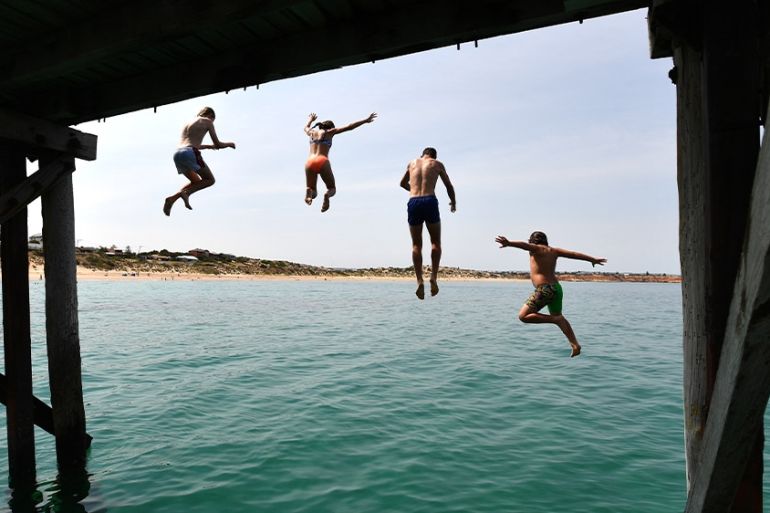Australia records hottest-ever day amid heatwave, fires
Hot, dry conditions expected to exacerbate bushfires that started earlier than usual in country’s east.

Australia recorded its hottest-ever day on December 17 with the average maximum across the country reaching 40.9 degrees Celsius (105.62 degrees Fahrenheit), the country’s Bureau of Meteorology said, as it warned of a heatwave across the more densely-populated southeast that was likely to add fuel to already raging bushfires.
The previous hottest day on record occurred in January 2013 when the temperature reached 40.3C (104.5F).
Keep reading
list of 3 itemsAustralians flee as soaring heat, winds threaten more bush fires
Several dead, hundreds of homes burned in Australia’s ‘mega fire’
The bureau warned on Tuesday that many areas of Australia would experience “severe to extreme” heatwaves during the week and that the temperature record could be broken.
“We saw significant heat build over Western Australia over the course of last week, and that heat is now pushing east over the continent, which is going to lead to several days of exceptional heat,” the bureau’s climatologist, Blair Trewin said in a statement.
|
|
The hot weather is stretching across the continent and feeding fires that have been ravaging Australia’s east for weeks, sweeping through 1.2 million hectares (three million acres) of bushland that has been left bone-dry by recent drought.
Fire authorities in the state of New South Wales (NSW) said on Wednesday there were 100 fires, half of them not contained. Six people have died in the blazes, which have destroyed 680 homes.
Oodnadatta, a South Australian town of about 200 people on an old Aboriginal trading route, was expected to be one of the hottest places in Australia with a peak temperature forecast of 47C (116.6F).
“It’s just another very hot day,” Hayley Nunn, who is the manager of the town’s distinct pink roadhouse, told Reuters News Agency by phone. The town is about 875 kilometres (544 miles) north of the state capital, Adelaide.
“People say to me they love summer. If you love summer, come out and experience this because you will not love it.”
A gentle reminder to please #putyourwaterbowlsout this summer. Your small act of kindness can alleviate their suffering — and even be the difference between life & death for struggling wildlife! 💦🐨 #heatwave #climateemergency pic.twitter.com/0rDz6Xzsgj
— Animals Australia (@AnimalsAus) December 18, 2019
Official data shows that the January to November period in 2019 was the second-warmest and second-driest on record, behind 2013.
“It is these conditions that lead to the continued above normal fire potential across most states and territories into 2020,” the Bushfire and Natural Hazard Cooperative Research Centre said in its seasonal bushfire outlook published earlier this week.

The combination of the thick smoke from the fires and intense heat has triggered numerous health warnings, especially for the young and the old, and those with respiratory conditions.
“People should take those conditions seriously and do what they can to keep out of the heat as much as possible,” said Richard Broome, the director of environmental health in NSW state.